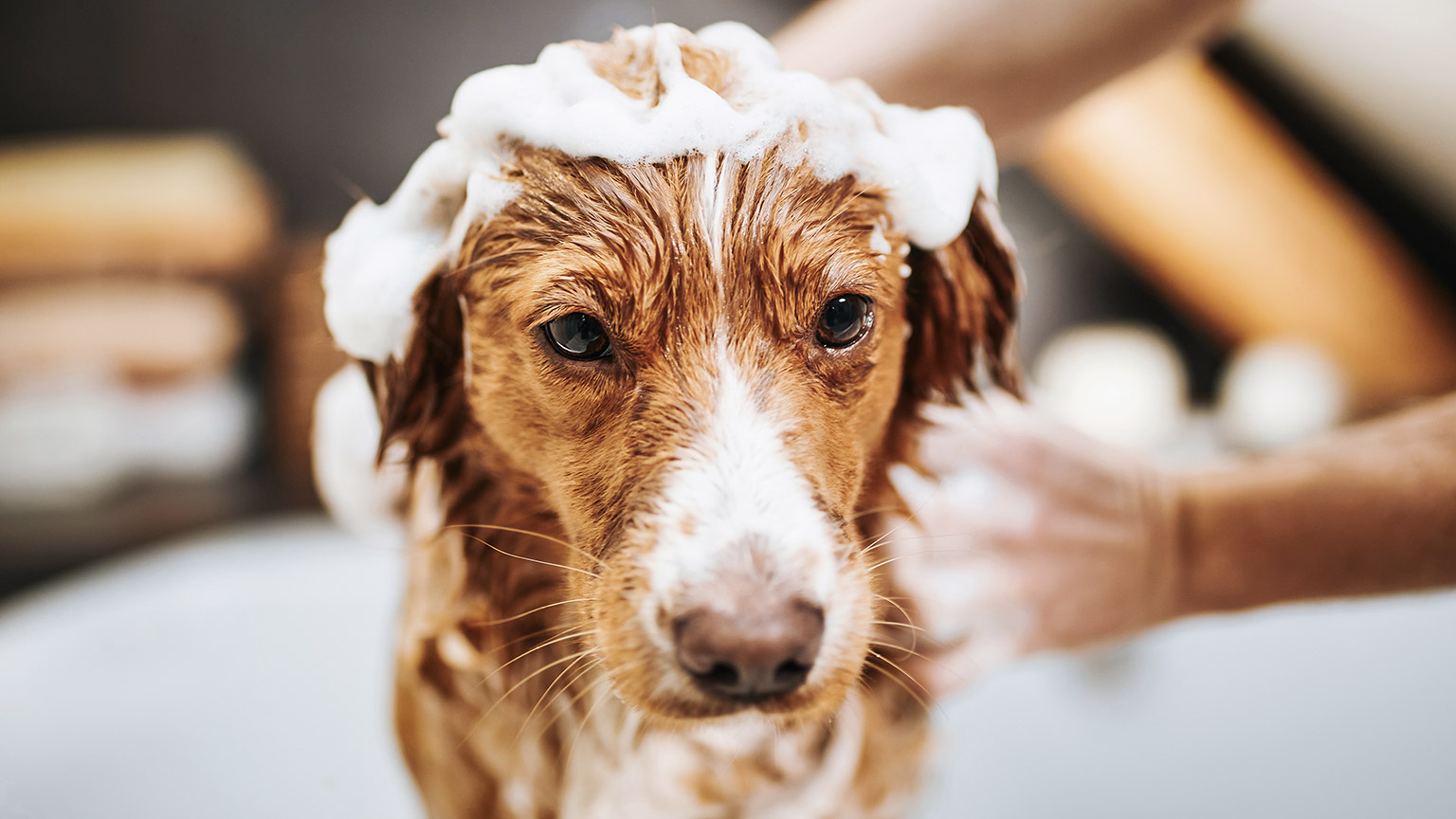
The Australian Veterinary Association (AVA) identifies a person who has chosen to partake in professional tasks under the direct supervision of a veterinarian as a veterinary paraprofessional. In the early stages of your career, you may be identified as a paraprofessional if you are working in a veterinary clinic under the supervision of a veterinarian.
The following statement from the World Organisation for Animal Health recognises animal welfare as:
“Animal welfare means the physical and mental state of an animal concerning the conditions in which it lives and dies.”
An animal experiences good welfare if it is healthy, comfortable, well-nourished, safe, does not suffer from unpleasant states such as pain, fear, and distress, and can express behaviours that are important for its physical and mental state. Good animal welfare requires disease prevention and appropriate veterinary care, shelter, management and nutrition, a stimulating and safe environment, humane handling, and humane slaughter or killing. 1
“While animal welfare refers to the state of the animal, the treatment that an animal receives is covered by other terms such as animal care, animal husbandry, and humane treatment.”
As someone who has elected to work in the animal care industry, you have an important ethical obligation to adhere to the welfare of animals. This includes providing:
- a safe environment
- adequate medical care
- support to the animal's physical and emotional wellbeing
- adequate hygiene
- protection from harm
If animals are treated poorly and are suffering, intervention from the law must be sought out to protect the animal from harm; this, too, is a part of the responsibility of an animal care worker. As you grow in your career, you will learn the procedures around intervention and reporting of suspected animal mistreatment.
Hygiene and welfare
Just as hygiene is important for humans, it is equally important for animals. Poor animal hygiene can lead to illness, skin conditions and infections.
It is important as an animal care professional you follow the relevant procedures for animal hygiene as they are outlined in your workplace. In some cases, animals may be kept in boarding kennels or the vet clinic overnight or for extended periods of time. Some hygiene practices may include cleaning out the housing and bathing. The animal should not be kept in housing that is soiled or exhibits uncleanliness. This can be detrimental to the animals’ health.
The daily animal hygiene tasks are essentially the same for all types of animals held in captivity. Whilst the scale and frequency may vary significantly, the ultimate goal of conducting hygiene routines is to maintain the general welfare of the animal.
The basic principles of animal welfare include aspects of hygiene and have been illustrated in the following table.
| Principle | Implementation |
|---|---|
| Animals must be provided with food and water | In clean containers and bowls |
| Animals must be handled properly | When undertaking medical observations, treatments, grooming, transportation, and cleaning routines |
| Animals must have access to healthcare | Unhygienic conditions may cause illness, infestation or injury that requires medical intervention. |
| Animals must have environmentally appropriate housing that is suitable for their species and behaviour. | This housing must be kept clean and tidy, especially the removal of faeces, urine, and soiled bedding. |
| Animals must have a lifestyle that is free from stress, pain, and suffering. | Contaminated food and water, badly maintained coats and poorly treated injuries all contribute to stress, pain and suffering. |
Recently, the 5 domains of animal welfare have also been introduced. These tie into the principles listed above.
Nutrition
Animals need to have access to clean water and enough food to provide a balanced diet. Food made available to animals is nutritious, appropriate for the species and individual animal and varied.
Environment
Animals are comfortable and safe. They are provided with opportunities and choices to engage in natural and rewarding behaviour. This can be done through enrichment activities.
Health
Animals are fit and healthy. Any injuries and illnesses are prevented or immediately and appropriately treated.
Behaviour
Animals are able to express natural and rewarding behaviour. They are able to engage in free movement and play. Animals have positive contact with animals and people, which allows them to form social bonds.
Mental or affective state
The other four domains, Nutrition, environment, health and behaviour, all influence an animal’s mental state. Each of these can provide positive and pleasurable experiences that enhance an animal’s mental state.
Watch
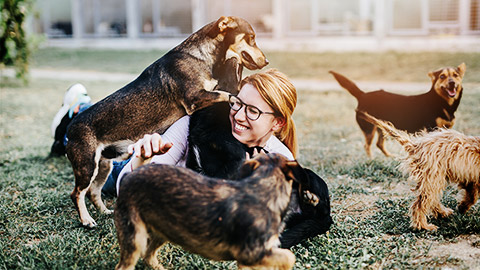
Upon arriving at work each day, you must check which duties and areas you have been allocated to. In some organisations, this will be the same each day. However, some workplaces rotate their staff or have a wide variety of animals that require care; therefore, duties may vary. Some of these duties may be allocated to specific people within the Animal Care facility based on experience or level of qualification.
In an animal care environment, there will likely be multiple shifts rostered during the day or throughout the week. You may not see or speak to some of your colleagues if they are rostered at different times. Therefore, communication is vital when conducting animal hygiene routines.
There will likely be some formal documents or systems, such as cage cards or computer records, that you are required to update after each hygiene routine rotation. Before commencing your duties always check the records that have been left by the previous shift, this will help to determine if a particular animal has been exhibiting any unusual behaviours or if its appetite has been poor.
Continued instances of abnormal behaviours may indicate an underlying condition that may need medical intervention. If there is an overlap time between shifts, use this opportunity to get a verbal update on each animal.
When you are carrying out cleaning tasks, you need to ensure you are well-organised and equipped with the appropriate resources. The following checklist has been put together to ensure you can keep track of what you would need to carry out cleaning routines.
Vacuum
Mop & bucket
Scrubbing brushes
Sinks
Paper towel
Disinfectant spray bottles
Let us take a closer look at the daily hygiene routines in further detail.
Headcount/animal observation
A preliminary check of all animals under your care should be undertaken to verify that the records are accurate, especially if you are on the first shift of the day. Animals may have been moved or have died since your last shift, and this may need immediate attention.
During this preliminary check, you can observe general behaviours and potentially identify any immediate indicators of illness or injury. Before we touch the animal, we should look and listen to the animal. The following table provides you with these specific indicators to be mindful of when you are carrying out your preliminary checks. There is also a description to accompany each indicator to help extend your understanding of how each one may appear.
| Preliminary check indicator | Description |
|---|---|
| Environment & Distance Examination |
Mentation |
| Assessing the animal head-to-toe |
|
| Lameness | A reluctance to move and vocalising when walking can be a sign of injury. It may be a pre-existing injury that is getting worse or a new condition. |
| Changes in drinking or eating patterns | If an animal's food bowl is still full from the last feeding then they may be ill, especially if they normally have a good appetite. Also, excessive water intake can be a symptom of illness. |
| Bleeding | If an animal has had recent surgery, it may have torn stitches. Alternatively, bleeding may be an indication of fighting (amongst group-housed animals) or self-mutilation |
| Swelling | A potential sign of injury |
Remember, animals will be excited to see you, especially dogs. You provide food and social activity, which they crave. Therefore vocalisation (i.e. barking, meowing, chirping) is not necessarily a sign of illness or injury. However, if it is linked to any of the other conditions, it may be an indicator of pain and should be investigated.
It is also worth noting that some animals do not like to be contained, like cats and native animals, and will vocalise sorrowfully to get attention and hopefully release from their cage. If this is a temporary containment then it may have to be ignored, otherwise, if the animal is being kept for a longer period it may require a larger enclosure.
Basic animal handling
As part of your daily duties, you will likely be required to handle various animals. This may mean removing them from their enclosure or cage so that cleaning can be undertaken or assisting with health care examinations, grooming and/or the provision of exercise and social activity.
Animal handling techniques will vary depending on the type of animal; however, some basic precautions always apply:
| Precaution to take | Practice |
|---|---|
| Be Prepared | Ensure you have the necessary restraint equipment and that you know where you are taking the animal. Remove obstacles, contain other animals and close any external doors |
| Safely Approach | Always observe animal behaviour before attempting to handle them. Are they displaying relaxed, friendly body language, or do they appear stressed or aggressive? |
| Restrain Correctly | Only use species-specific restraint equipment and/or handling techniques. This will limit the chance of injury to yourself or the animal and also prevent escape. |
| Only use species-specific restraint equipment and/or handling techniques | This will limit the chance of injury to yourself or the animal and also prevent escape. |
Feeding and watering
Feeding and watering may be done up to three times a day, depending on the animals in your care. Often, it may coincide with the administration of medication and toileting.
Feeding routines can be quite complex, depending on the health and/or training regimes of the animal. For example, a dog in a veterinary surgery that has diabetes will be on a specific medically prescribed diet, whereas a racehorse will have a special diet designed by their trainer to optimise their physical performance.
Special dietary requirements should be recorded on the animal's cage card or other documentation that is specific to the individual animal. As their caregiver, you will be required to be familiar with these special requirements and ensure that the correct types of food in the correct quantities are provided at the right times.
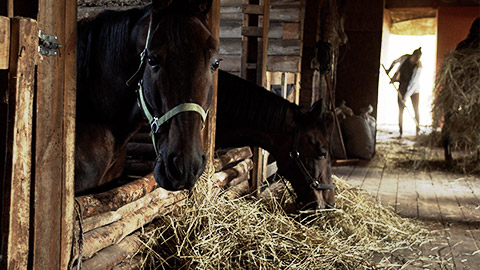
Cleaning and disinfecting
When you are working in the animal care industry, you will spend a good portion of your shift undertaking cleaning duties. Animals can be quite messy. Some areas that will need attention are:
- feces and urine in housing
- bedding
- feed and water dishes and toys
- dirt
- floors (both those in individual cages/enclosures and also common areas).
Tip
When cleaning the housing of the animal, you should carry out the following procedure:
- Practise hand hygiene by correctly washing your hands.
- Wear appropriate personal protective equipment (PPE). This may include gloves, aprons, and appropriate footwear.
- Check the animal for responsiveness and any bodily soiling- if the animal has soiled, it will need to be bathed.
- Place the animal in secondary housing until the cleaning procedure has taken place.
- Remove any soiled bedding, flooring, or litter from the housing. (Housing can vary depending on the animal. However, most housing will have a layer of newspaper, a rubber mat, a toileting mat, a blanket, and a litter tray for cats).
- Any bedding that is disposable needs to be removed and any non-disposable bedding washed. Large housing, including cages or enclosures, will need to be hosed and mopped with disinfectant.
- Remove food and water containers and toys- this is important when cleaning with disinfectant as you do not want the substances contaminating the animal’s food and water.
- Wash the food and water bowls that require cleaning with mild detergent before they are replenished.
- If applicable, sweep the area with a broom before mopping
- Clean the housing with the appropriate disinfectant and disposable (preferably biodegradable) towelling- ensure all areas have been cleaned, including all walls and roof of the housing and the rubber mat (if using). You should always start at the top and work your way down the walls and clean the floor of the housing.
- Replace the removed flooring with the clean substrate (if using).
- Where litter trays are in use, the litter trays will need to be cleaned and refilled where necessary. All faeces will need to be disposed of appropriately; this will often be in a separate bag. Ensure you dispose of it correctly, often this will be in specially labelled bins that are not used for other types of waste. The litter tray will need to be disinfected and cleaned before replenishing the litter
- Place rubber mat, toileting mat and clean blanket back inside the housing.
- Place clean litter tray (if using), water and food containers with fresh food and water and toys.
- Place the animal back into the housing.
- Dispose of any rubbish
It is important to note that if the animal has soiled in the housing overnight and it’s contacted their skin or fur, they too will need to be bathed. The animal cannot be left in its soiling at risk of infection or scolding and appropriate bathing procedures need to be carried out for the animal.
You must always refer to your workplace's cleaning schedule to determine the frequency of cleaning duties and also the types of equipment and chemicals you are required to use. After using equipment for cleaning, such as mops, you need to ensure they are disinfected and dried daily, changed weekly and disposed of completely (and immediately) if they have come into contact with infectious materials.
To maintain hygiene and reduce the risk of spreading anything contagious, you should always start at the cleanest area and move to dirty areas or contaminated areas. Sometimes, they will have separate cleaning utensils for special areas, e.g. surgery and isolation.
In an animal care environment, there will likely be multiple shifts rostered during the day or throughout the week. You may not see or speak to some of your colleagues if they are rostered at different times. Therefore, communication is vital when conducting animal hygiene routines. There will likely be some formal documents or systems, such as cage cards or computer records, that you are required to update after each hygiene routine rotation.
Disinfecting
Disinfecting should always take place after the cleaning process. This is particularly important as it helps to maximise infection control and eliminate bacteria from the affected area. When you are using a disinfectant, you need to ensure you follow these steps:
- Practise hand hygiene by correctly washing your hands.
- Wear disposable gloves and rubber gloves as secondary protection, protective eyewear, mask and apron
- Ensure the area is well ventilated
- Ensure the disinfectant has been diluted correctly before use. Be mindful that in some cases, an increased disinfecting agent may be required due to the nature of bacteria.
- Apply the disinfectant for the stipulated contact time, this means, the disinfectant may be required to be left on a surface for a certain amount of time to ensure efficacy before it is wiped off.
- Rinse the area after the stipulated time frame, especially in housing for cats who are constantly groomed.
- Allow the area or surface to be completely dry before exposing the animal.
- Return items to their respective place.
- Remove PPE and wash your hands.
The following video outlines the daily routine surrounding the care of cats when they are in care.
Examples of chemicals used to disinfect
In an animal care setting, various types of disinfectants are used to ensure a clean and safe environment. Here are some common types:
Quaternary Ammonium Compounds (Quats)
- Effective against a wide range of bacteria, viruses, and fungi.
- Non-corrosive and generally safe for use on many surfaces.
Chlorine Compounds (e.g., Bleach)
- Highly effective against bacteria, viruses, and fungi.
- It can be corrosive and may damage some materials; it needs proper dilution.
Alcohols (Ethanol, Isopropanol)
- Effective against bacteria and many viruses.
- Quick-drying and useful for disinfecting small surfaces and equipment.
Hydrogen Peroxide
- Effective against bacteria, viruses, fungi, and spores.
- Non-corrosive and breaks down into water and oxygen, making it environmentally friendly.
Phenolic Compounds
- Effective against bacteria, viruses, and fungi.
- It can be toxic to some animals (e.g., cats) and may require special handling.
Iodophors (Iodine-based disinfectants)
- Effective against bacteria, viruses, and fungi.
- Less irritating and more stable than traditional iodine solutions.
Peracetic Acid
- Effective against bacteria, viruses, fungi, and spores.
- Rapid action and leaves no harmful residues.
Glutaraldehyde
- Effective against bacteria, viruses, fungi, and spores.
- Used primarily for high-level disinfection of medical and veterinary equipment.
Case Study
Whilst working at Happy Paws as an animal attendant, you have been asked to read the SDS sheet for the following two chemicals used to disinfect the animal cages in the animal stays section of the facility. Below is an example of information you may encounter when reviewing the information for the following chemicals used:
| Trigene | Virkon |
|
Trigene is a multi-purpose disinfectant commonly used in animal care settings. It is effective against a wide range of pathogens, including bacteria, viruses, fungi, and mycobacteria. Here’s a detailed explanation of Trigene, including its application, dilution, and contact time: Explanation Application Contact Time Safety Precautions |
Virkon is a versatile disinfectant commonly used in animal care settings due to its broad-spectrum efficacy against bacteria, viruses, fungi, and spores. Here’s a detailed explanation of Virkon, including its application, dilution, and contact time: Explanation Application Application Method Contact Time Safety Precautions |
Watch
Housing maintenance/ adjustment
As part of your everyday observations and cleaning duties, you must also conduct a routine inspection of the animal housing. Damage to cages, pens and enclosures can cause injury and potentially allow an animal to escape.
Things to look for include:
| Rust | If an animal cuts itself on a rusty nail, health problems such as tetanus can occur. Rust also makes surfaces difficult to disinfect. |
|---|---|
| Peeling paint | This could become a problem if the animal within the housing decided to chew on the peeling paint. The underlying surface may be porous or harbour contamination. |
| Broken wire | This is also an injury and possibly an infection risk, such as tetanus |
| Lifting linoleum/floor covering | The animals in the enclosure could injure themselves by cutting themselves, tripping or chewing. Infection may be established beneath the surface, making cleaning more difficult. |
Many of these issues can also create a breeding ground for micro-organisms, in addition to presenting as unprofessional to members of the public and making cleaning difficult. Ensure you report any instances of damage to housing environments and follow-up to see if they have been repaired.
The housing environment may also need to be adjusted for weather or climatic conditions. This may mean:
- closing doors/windows
- ensuring access to the interior or sheltered areas
- providing warmth in the form of jackets/rugs (dogs, horses), soft bedding and/or blankets
- raising animal enclosures
- moving portable enclosures undercover
- providing additional water
Removing rubbish
Removal of rubbish is a part of the cleaning process that needs to be carried out when cleaning housing, enclosures, and cages, as well as removing rubbish from inside the clinic/ facility itself.
Cross-contamination, sustainable practice and disposal of sharps are all factors that need to be considered when you are removing rubbish.
When you are cleaning out housing, you will likely be disposing of soiled contents, including training mats, newspaper, hay, litter trays, food and any additional mats or blankets that may be used to keep the animal comfortable overnight.
It is important to note that when you are removing and disposing of rubbish that contains bodily discharge such as urine, feces, vomit, or blood, it needs to be disposed of following a specific procedure; it is not simply putting it into the rubbish bin and calling it a day. Some of these animals may have an infection and disposing of their waste can present the hazard of cross-contamination and transmission of disease.
When disposing of rubbish (specifically that of soiled nature), you should:
- Always wear PPE, including gloves and an apron
- Remove soiled contents and place them in a plastic bag; this includes cat litter.
- Disinfect and clean the area with disposable (preferably biodegradable) paper towels
- Dispose of the rubbish bag in the correct waste bin- this should be clearly labelled “soiled waste only.” The waste bin should be in an area outdoors where people are not inhaling the waste.
- Wash hands
It is also important for pregnant women to avoid emptying cat litter, as inhaling cat waste can be toxic.
When disposing of rubbish from an isolation ward (ISO-W), you must follow the process for disposal to avoid any infectious transmission to other parts of the animal hospital or facility.
When disposing of rubbish in the ISO-W, you should:
- Practise hand hygiene by washing your hands
- Wear full PPE, including masks, gloves, disposable clothing, and shoe coverings.
- Remove any rubbish including soiled contents, including bedding and litter and place in a strong plastic bag.
- Disinfect and clean the area with disposable paper towels.
- Dispose of the rubbish in the correct waste bins (this will be clearly labelled with soiled contents); these bins will be separate from the rest of the facility as much of the rubbish will need to be incinerated to prevent infectious transmission.
- Remove all PPE once it is safe to do so and dispose of it in the appropriate waste bin, these bins will also be clearly labelled with PPE, so you know where to dispose of the items and are likely to be incinerated. If they are not disposable, they will have to be washed separately from the rest of the laundry items.
- Wash your hands
Along with your daily routine, you will also have weekly and periodical tasks. These tasks may differ from each workplace. Below are some examples of weekly and periodical tasks.

Weekly tasks:
- Ordering stock
- Balancing the till and depositing money
- Cleaning and maintenance of equipment (depending on manufacturer instructions)
Periodical tasks:
- Stocktake
- Cleaning and maintenance of equipment (depending on manufacturer instructions)
- Testing & tagging equipment
- Licensing of equipment
General Health Assessments
General health assessments in the animal care industry are vital to evaluate an animal's overall health and well-being. These assessments are typically performed trained animal care professionals. These assessments aim to detect any signs of illness or injury, monitor the animal's health status over time, and ensure preventive care measures are in place.
Importance of General Health Assessments
-
Early Detection of Disease: Regular health assessments help catch illnesses or conditions early, improving successful treatment chances.
-
Preventive Care: They allow for implementing preventive measures like vaccinations, parasite control, and dental care, which help maintain the animal’s health.
- Welfare Monitoring: These assessments ensure that animals are being cared for in ways that support their physical and mental well-being, which is essential in any animal care setting, such as sanctuaries, boarding facilities, or veterinary clinics.
| Physical Examination: |
|
| Behavioural Assessment: |
|
| Nutritional Status: |
|
| Parasite Control: |
|
| Vaccination and Preventive Care: |
|
| Dental Health: |
|
| Reproductive Health: |
|
| Environmental Factors: |
|
When a crate, enclosure or cage needs cleaning, the animal cannot be kept inside while the cleaning process is taking place. In the time it takes you to clean out the housing, the animal should be placed in alternative housing until it is ready. Usually, there may be a spare crate, enclosure or carry basket close by that the animal can be placed in until the housing has been cleaned. You will need to be mindful if housing may require extended periods to clean, dry and make ready for the animal to return. Always remember your WHS/OHS procedures when handling animals. Yours and the safety of others are at risk if you do not consider the animal and its temperament when moving and handling them.
The housing will have been cleaned and hosed down (if necessary for larger enclosures) using disinfectant to eliminate bacteria. It is important the housing has been rinsed of all residues from the disinfectant to ensure the animal does not ingest any of it. Food, water, and blankets will also need to be replenished for the animal to return to comfortable housing. Where possible, the area that has been hosed out will need to be as dry as possible before returning the animal and replenishing food, water, and bedding. Therefore, the secondary housing they are placed into will need to be large enough to hold the animal while preliminary housing dries.
When returning the animal to their housing you must take extra care during this process. The following steps outline the correct procedure to take when returning the animals to their housing.
- Make sure there are no other animals out of their cages in the housing area.
- Mop the floor of the kennel room floor with hospital-grade disinfectant (Trigene)
- Either dry the floor with a clean towel and place the towel into the wash, or place the wet floor sign out.
- Replenish food, water, and bedding.
- Place the animal back into a clean cage and secure the door.
- Wash and dry your hands.
- Update their monitoring record sheet.
The following video provides a demonstration of the daily routines of working with dogs in care. It also dives into some insight into the cleaning techniques of larger enclosures.
Watch
Health examinations
Animals that are new to the facility should undergo a basic health examination, especially if they are staying for some time (such as boarding kennels or animal welfare shelters), the following are examples of what examinations may need to be carried out. You should also take a history from the owner regarding normal behaviour and any health conditions they currently have.
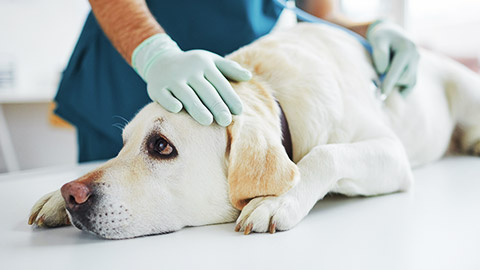
- Vital signs include heart rate, breathing rate, and temperature.
- Weight & body condition score
- Vaccination status, which may include providing vaccines.
- Signs of infestation such as fleas.
- Obvious signs of illness, for example, coughing or discharges.
By conducting this health examination, you will be able to quarantine/isolate any potentially infectious animals from the main population to limit the spread of disease or infestation. The animal can then receive appropriate treatment.
Grooming
Some animals may require bathing or other grooming tasks while staying in the facility. Grooming may be offered as an additional service or the only service at your facility. If you work with rescue or stray animals, this is an important step as they may not have been groomed in a while or at all.
Exercise and social activity
All animals require exercise and social activity, and their housing should be designed in a way that allows this to occur. The amount of exercise that occurs will depend on the type of animal facility.
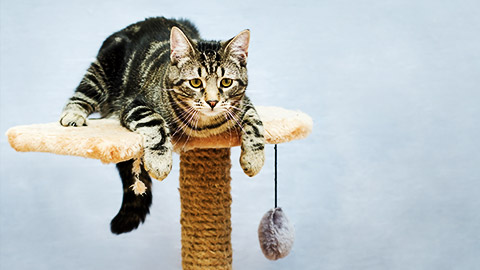
Some examples include:
| Amount of exercise | Animal facility |
|---|---|
| Minimal Exercise | Veterinary clinics house animals for short periods while they are recovering from illness or injury. |
| Daily Unstructured Exercise | Boarding kennels or Welfare Shelters housing healthy animals long term. Animals should have a safe, contained area to run and play freely, potentially interacting with other similar animals. |
| Daily Structured Exercise | Racehorse stables housing thoroughbred racehorses. Horses should have a set training regime designed by a horse trainer. |
| Free Roam Exercise | Zoos and wildlife parks house captive exotic animals. Animals should have an enclosure that allows them enough space to walk, run, climb or swim freely, as their natural habitat would allow |
Certain animals prefer human contact more than others and will enjoy time spent with their handler, taking a few minutes for petting/cuddles is beneficial to their social activity needs. Other animals prefer to be housed with others from their species as they are herd animals.
Changing the types of enrichment apparatus is important from time to time, this may mean providing new and interesting toys for dogs, or a climbing frame for cats.
